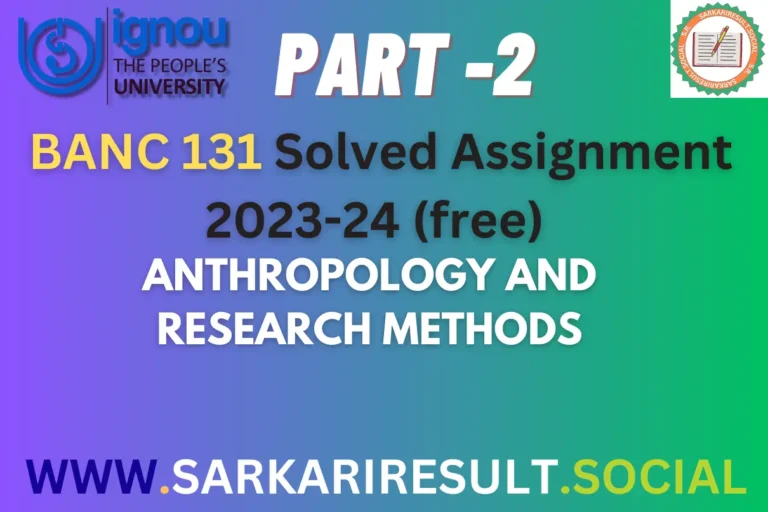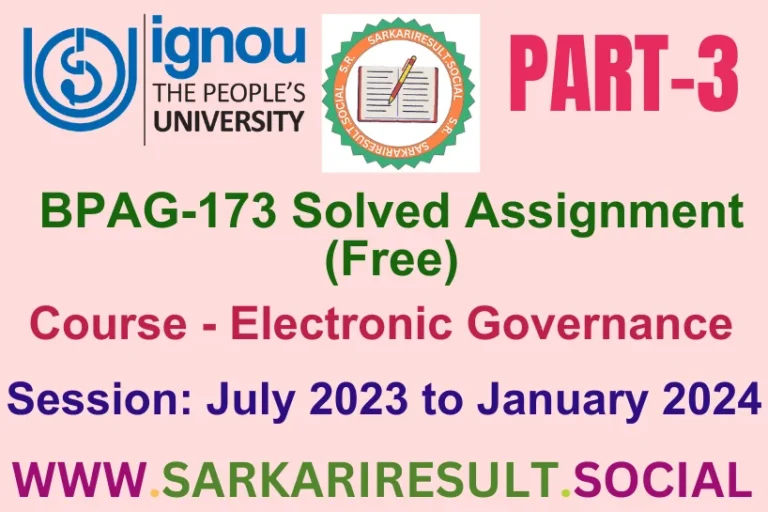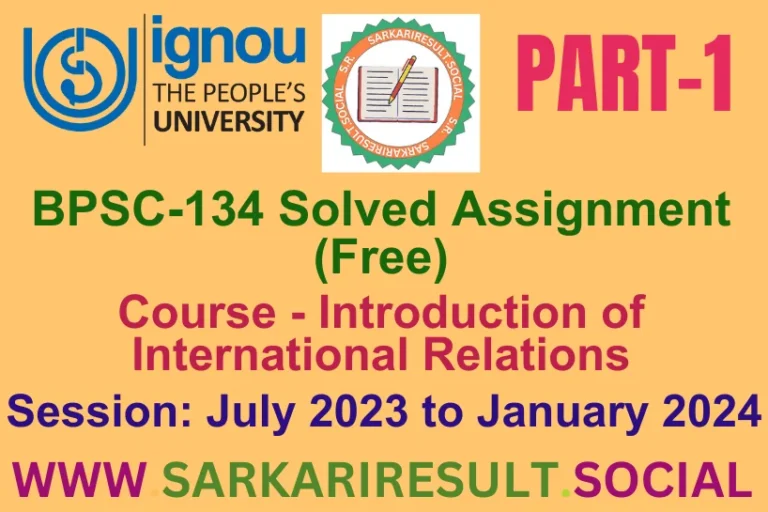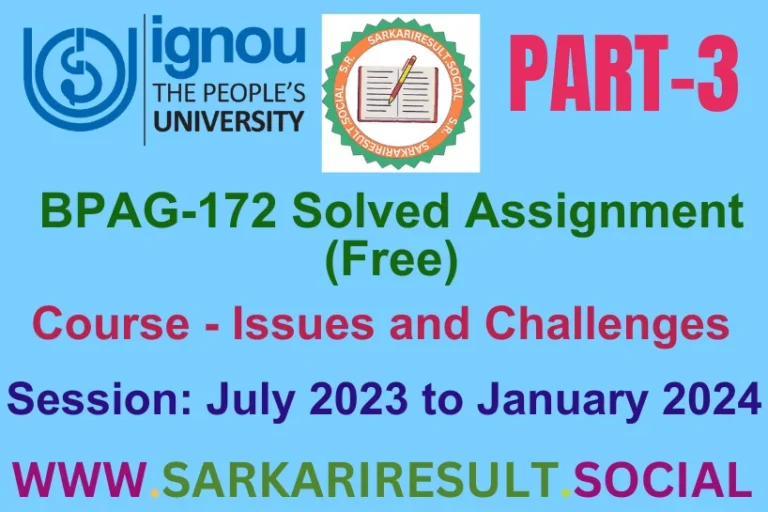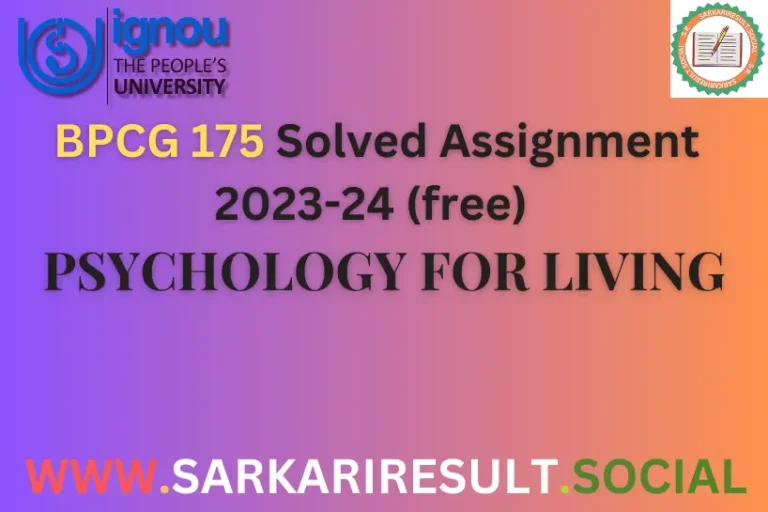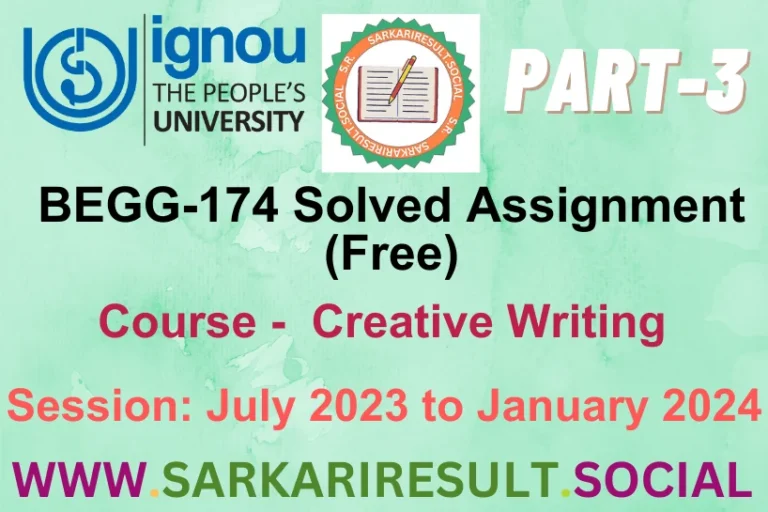BABG 171 SOLVED IGNOU ASSIGNMENT FREE PART 3
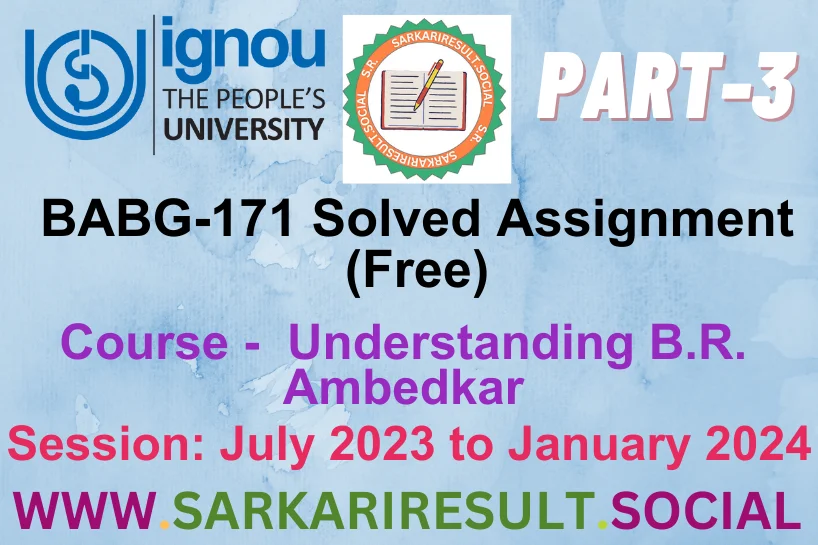
Embark on Assignment-III of BABG 171 SOLVED IGNOU ASSIGNMENT FREE PART 3: Understanding B.R. Ambedkar with our comprehensive IGNOU Solved Assignments 2024 Guide. Delve into concise yet insightful notes on Ambedkar’s economic analysis of the caste system, state socialism, his perspectives on the Indian village, and his views on social democracy. Each note, meticulously crafted in about 100 words, guides you through the key concepts. Enhance your understanding and excel in your coursework.
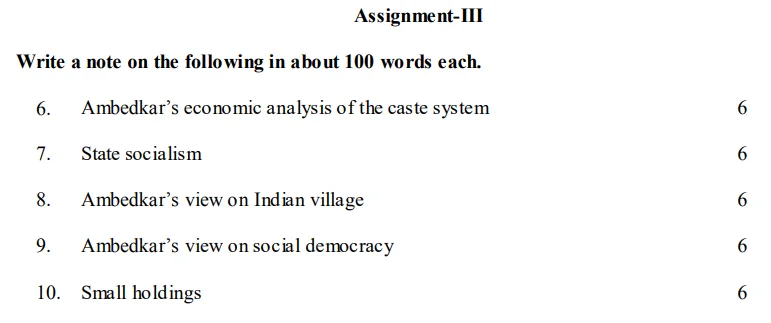
Write a note on the following in about 100 words each.
Q.6 Ambedkar’s economic analysis of the caste system
Ans. Dr. B.R. Ambedkar’s economic analysis of the caste system highlighted its role in perpetuating economic exploitation. He argued that the caste structure assigned occupations based on birth, restricting certain groups, especially Dalits, to menial and degrading jobs.
This segregation led to economic disparities, as these communities were denied access to resources, education, and better employment opportunities. Ambedkar believed that annihilating the caste system was essential for achieving economic justice and empowering marginalized communities economically.
Q.7 State socialism
Ans. State socialism is a political and economic system where the state or government plays a dominant role in managing and owning the means of production. In this model, the government controls major industries, resources, and economic planning.
The objective is to reduce economic inequality and promote social welfare by centrally coordinating and directing economic activities. State socialism often involves nationalization of key industries and services, with the belief that state intervention can address social issues and ensure equitable distribution of wealth. It contrasts with other forms of socialism by emphasizing a strong, centralized role for the government in economic affairs.
Q.8 Ambedkar’s view on Indian village
Ans. Dr. B.R. Ambedkar had a critical view of the Indian village, seeing it as a hotbed of social inequalities and oppressive caste structures. He argued that the village system perpetuated discrimination, untouchability, and denied equal rights to marginalized communities.
Ambedkar believed that political and social transformation must extend beyond the village, and he emphasized the need for urbanization and industrialization to break the shackles of caste-based discrimination. His vision sought to create a more just and egalitarian society by challenging the traditional power structures entrenched in rural communities.
Q.9 Ambedkar’s view on social democracy
Ans. Dr. B.R. Ambedkar advocated for social democracy as a means to achieve political and social justice. He believed in a democratic framework that not only guarantees political rights but also addresses social and economic inequalities. Ambedkar emphasized the importance of affirmative action to uplift marginalized communities, ensuring their equal participation in all spheres of society.
His vision of social democracy aimed at creating a just and inclusive society, challenging caste-based discrimination, and promoting the welfare of the oppressed. Ambedkar’s ideas laid the foundation for the principles of justice, liberty, and equality enshrined in the Indian Constitution.
Q.10 Small holdings
Ans. Small holdings refer to agricultural land parcels or farms with limited acreage. Typically, these are relatively small plots of land owned and cultivated by individual farmers or families. Small holdings are often characterized by intensive cultivation practices, where farmers aim to maximize yields within the constraints of limited space.
While they can contribute to local and diversified agriculture, small holdings may face challenges such as limited economies of scale, making it harder for farmers to access resources and technology. In various regions, policies aim to address the needs and challenges associated with small holdings to promote sustainable agriculture.
Also See This: BABG 171 SOLVED IGNOU ASSIGNMENT FREE PART 1

